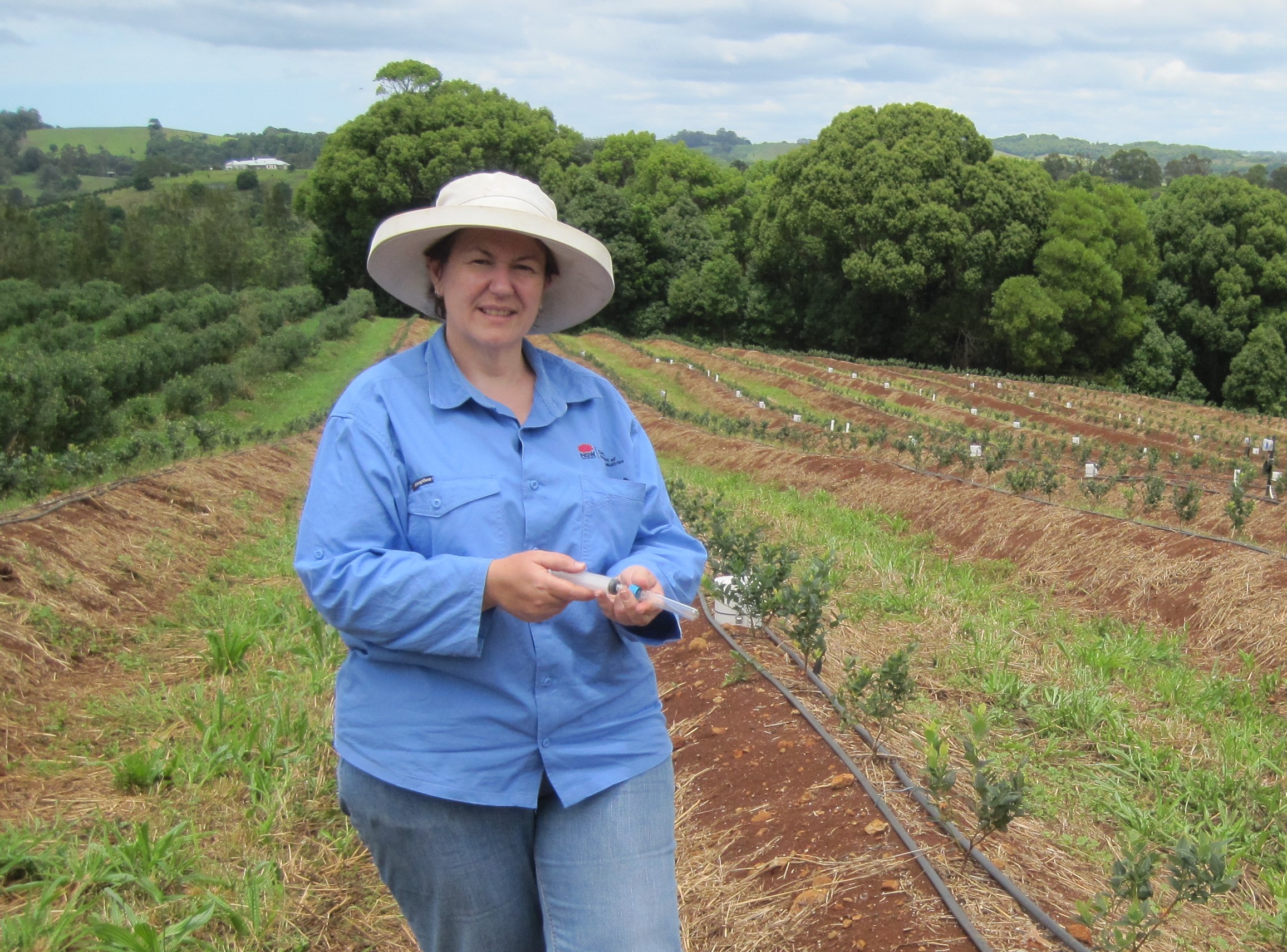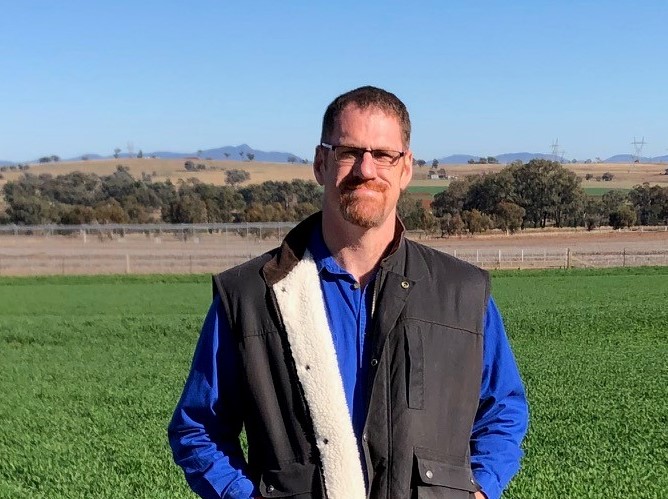
Digging the dirt on blueberry mound fertiliser management
Justine Cox - Soil Scientist and Dr Simon Clarendon - Soil Chemistry Research Officer
Click on the link below to listen to the audio from Friday 17 July 2020
Webinar Recording
How does soil type, texture, and time affect your fertiliser program?
Our July FSG Webinar focused on the soil in your blueberry mounds. In this recording, Justine Cox and Simon Clarendon discuss soil type and texture in the mound, and how soil chemistry and mound structure can change over time.
Justine also addresses other physical and biological aspects of the soil that affect fertiliser management, while Simon looks at the behaviour of phosphorous in soil.
The presentation considers the interaction of nutrients with soil type, pH, organic carbon, and cation exchange capacity, as well as the effects of mulch.
Justine Cox
 Justine Cox is a Soil Scientist for the New South Wales Department of Primary Industries, based at Wollongbar. She works predominantly in the horticultural area where her soil research covers the macadamia, blueberry, vegetable, melon and banana industries.
Justine Cox is a Soil Scientist for the New South Wales Department of Primary Industries, based at Wollongbar. She works predominantly in the horticultural area where her soil research covers the macadamia, blueberry, vegetable, melon and banana industries.
Justine has worked on soil erosion and soil health in the macadamia industry and mulches and soil amendments for the blueberry industry. She has also evaluated compost and biochar for soil carbon sequestration, greenhouse gas reduction, soil fertility and crop yield.
Dr Simon Clarendon

Simon is a Soil Chemistry Research Officer with NSW DPI’s Soil & Water Research & Development Team based in Tamworth.
Simon has worked extensively on understanding phosphorus loss pathways and mechanisms in soils across different agricultural landscapes.
His research also investigates how to mitigate these losses to improve both economic and environmental outcomes.
We welcome suggestions you might have for future webinar discussions. Send your feedback to FSG Coordinator Sarah Dadd:
Email: sarah.dadd@dpi.nsw.gov.au
Phone: 0477 705 114
Webinar instructions
You must register to take part in FSG webinar events or to access the recording if you are unable to attend on the day.
After registering, you will receive a confirmation email explaining how to join the webinar.
Most computers have built-in microphones and speakers, but you will get better audio quality if you use a headset or handset. You can also call in using your landline or mobile device.
For a stress free webinar, test your computer system a few days beforehand to make sure everything is functioning properly. For more information about how to join, register and attend a session take a look at the GoTo website or let GoTo check your system.
The webinar will be run using the GoToWebinar® system.
Check that you have the system requirements to run Goto meeting.
The webinar will run for approximately one hour.

